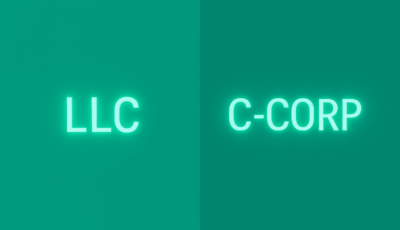An introduction to employee participation
Employee Participation Plans have long been an integral part of the startup culture in the Silicon Valley. Startups need motivated and committed employees to be successful. At the same time, in the beginning, they usually cannot offer competitive salaries – and talent is expensive. It is therefore necessary to explore other ways to attract and incentivise the right employees without draining the much-needed liquidity. Both the Employee Stock Ownership Plans (ESOP) and the Phantom Stock Ownership Plans (PSOP) provide startups with powerful tools to meet the needs of both the company and employees.
In this blog series, we first give an overview of the most common forms of employee participation. In the second part we will focus on the allocation keys (or who gets what). After that we will do a deep dive into the ESOP and the PSOP. The last part will give an overview over the key differences between an ESOP and a PSOP from a tax perspective.
This series will help you to understand the different options that are available for your startup, how they compare to each other and how to choose which is the most suitable for you.
Which participation plan is the right one for your employees?
There are multiple options when it comes to what you want to share with your employees:
- You can decide to share profit (if you have any) in the form of bonus payments;
- You can decide to share profit (in the form of dividends) and have employees participate in the value increase (i.e. participation) of your company via phantom shares (PSOP); or
- You can decide to share profit (in the form of dividends), have employees participate in the value increase of your company AND ownership (including decision rights) via employee shares (ESOP)
Comparing the three main forms of employee participation: Bonus payments, phantom shares & employee shares
The following list compares these three main forms of employee participation:
| Topic | Bonus payment | Phantom shares | Employee shares |
|---|---|---|---|
| Setup and implementation of participation scheme | Easy | Medium | Advanced |
| Effect on employee retention | Low | Medium | High |
| Shareholders’ consent required (dilutive effect) | No | Yes | Yes |
| Capital increase required | No | No | Yes |
| Direct impact on liquidity | Yes | No | No |
| Entitlement to dividends (or corresponding pay-out) | No | Yes | Yes |
| Participation / cash-out in case of an exit | No | Yes | Yes |
| Suitable for startups | Low | High | High |
| Tax optimisation (possibility of tax-free capital gains) | No | No | Yes |
To help you decide which form of employee participation is right for your startup, check the decision tree which can be accessed here.
The bonus – sharing the company profit with your employees
A bonus payment is a cash pay-out from the company to the employee. With a bonus plan, employees are entitled to a portion of the company’s profit, usually depending on certain variables defined in the employment contract (e.g. sales targets).
The bonus payment has a direct impact on the liquidity of the company (unlike the other options – ESOP and PSOP). As long as a startup is not yet profitable, this form of employee participation is not very helpful and neither increases motivation nor helps to attract talent. Also, a bonus system is typically less likely than an equity program to retain employees for a longer time. Additionally, it is likely to create a company culture focused on profit which you need to evaluate if that is what you like and need.
The amount of the bonus is typically made dependent on the achievement of certain targets (e.g. profit or specific performance) and upon achievement is paid in addition to a fixed salary as a variable salary component. The bonus payment is also taxed as salary component and additional social security contributions are payable on its value.
Depending on how it is structured, the bonus can either
- qualify as a variable salary component, which means that the employee has an unconditional entitlement to it; or
- be subject to the sole discretion of the company
We recommend specifying in the employment agreement, that any bonus payments are made at the sole discretion of the company and past bonus payments, if any, do not entitle to any future bonus payments (ii. above).
The setup and administration of a bonus scheme are relatively easy compared to a PSOP or an ESOP.
The PSOP – a virtual stake without participation rights
Under a PSOP, employees receive so called phantom shares. This gives them a virtual stake in the company, but without shareholders’ rights (e.g. voting rights). The financial rewards are linked to the value appreciation of the company stock value. The financial benefits of a shareholder are emulated as far as possible on a contractual basis.
The underlying PSOP specifies the events on the occurrence of which the phantom shareholders receive a pay-out. The desired scenario is usually the sale of the company and thus the exit of the existing shareholders. Besides this, it can also be stipulated that the phantom shareholders are entitled to receive a pay-out if the company pays dividends to the shareholders. This means that no pay-outs are made to the phantom shareholders unless sufficient liquidity is available.
The fact that no real shares have to be issued and the phantom shareholders have no participation rights in the shareholders’ meeting makes the setup and the administration comparatively simple.
With a PSOP, participating employees are motivated to work on the long-term strategic objectives of the company as it is mainly based on the shares value increase. However, since the employee does not become a co-owner of the company, the retention effect is weaker than with the ESOP. Compared to the ESOP, the tax burden for the employee is higher.
The ESOP – employees become co-owners
With an ESOP, the participating employees get the chance of becoming co-owners of the company they work for. They usually receive the shares below market value (or even for free). This boosts motivation and increases the accountability of the employees. As shareholders, employees are given the right to participate in the shareholders’ meeting and to vote on important strategic matters.
Upon allocation of employee shares, the difference between the exercise price and the market value is taxable income. If this difference is high, it can have a significant impact on the employee’s tax burden without the employee having received cash to fit the bill. In return, a shareholder generally obtains a tax-free capital gain when selling the shares at a higher value than the purchase price.
Setup and administration are more advanced since the legal foundation has to be laid before an ESOP can be implemented. In particular, a (new) shareholders’ agreement is required. Also, the company will usually create conditional share capital, for which a notarised shareholders’ resolution and registration with the Commercial Register are required. To simplify the management of both ESOP and PSOP, we recommend the equity management platform Ledgy.
Summary
The three main forms in the spectrum of employee participation schemes are:
- Bonus, i.e. purely profit-sharing;
- PSOP (phantom shares), i.e. profit sharing and participation in the value increase; and
- ESOP (employee shares), i.e. profit sharing, participation in the value increase and shareholder rights.
Since the bonus usually qualifies as a variable salary component and is therefore unconditionally owed by the company, this form of employee participation is in most cases less suitable for startups. In addition, the retention and motivation effect is lower compared to the other forms of employee participation.
The PSOP has the advantage that it is relatively easy to implement. Employees can benefit from the financial advantages of a shareholder without actually becoming a shareholder. This means that there is no need for a capital increase or adjustment of the shareholders’ agreement or a cumbersome transfer of shares. The disadvantage is that in the event of an exit, the employee cannot realise a tax-free capital gain and the profit is instead taxable as taxable income. In addition, the employee is less closely linked to the company than with real shares.
Under an ESOP, employees have the opportunity to become co-owners of the company. This can have a special motivating effect on the participants. Employees can participate in the shareholders’ meeting, have a say in who is elected to the board of directors and vote on important business matters. In addition, the tax burden in case of an exit or dividends is lower than under a PSOP. On the other hand, the setup and implementation is comparatively complex. For example, the pool of shares available to employees consists either of so-called conditional share capital or shares held by the company itself (treasury shares).
To help you decide which form of employee participation is right for your startup, we have created a decision tree that can be accessed here.
This series has been created in collaboration with Jana Nevrlka from Cofounding. The abbreviated version is posted here.












